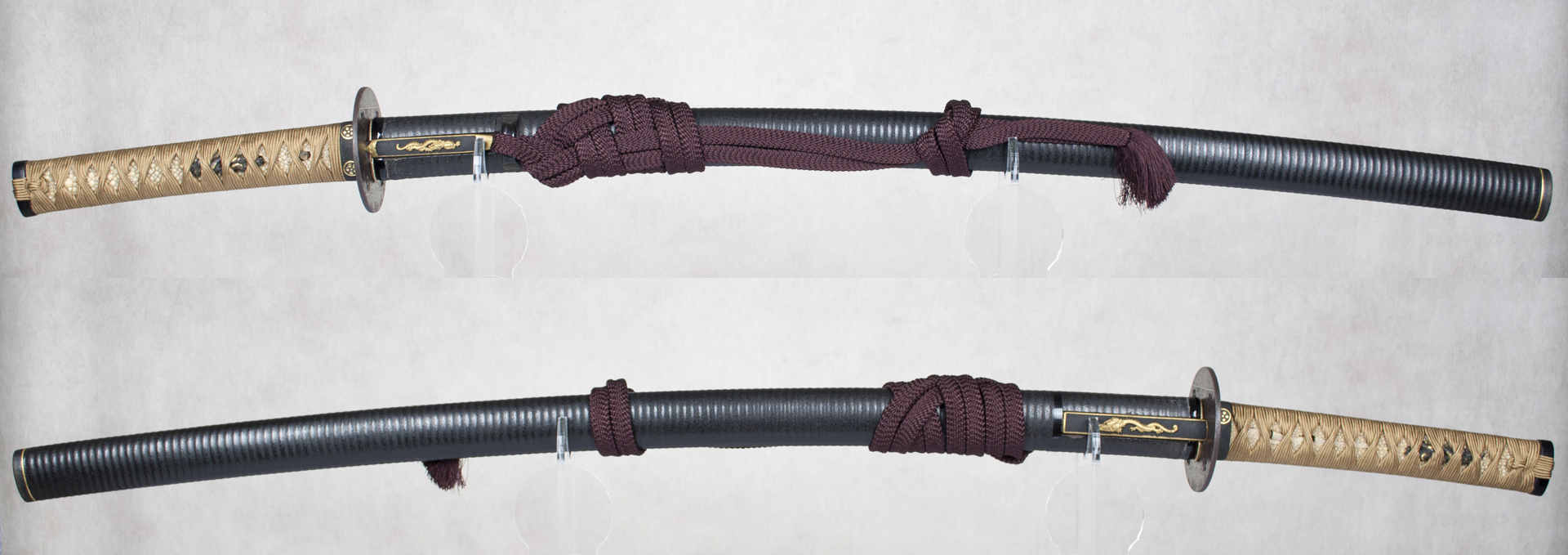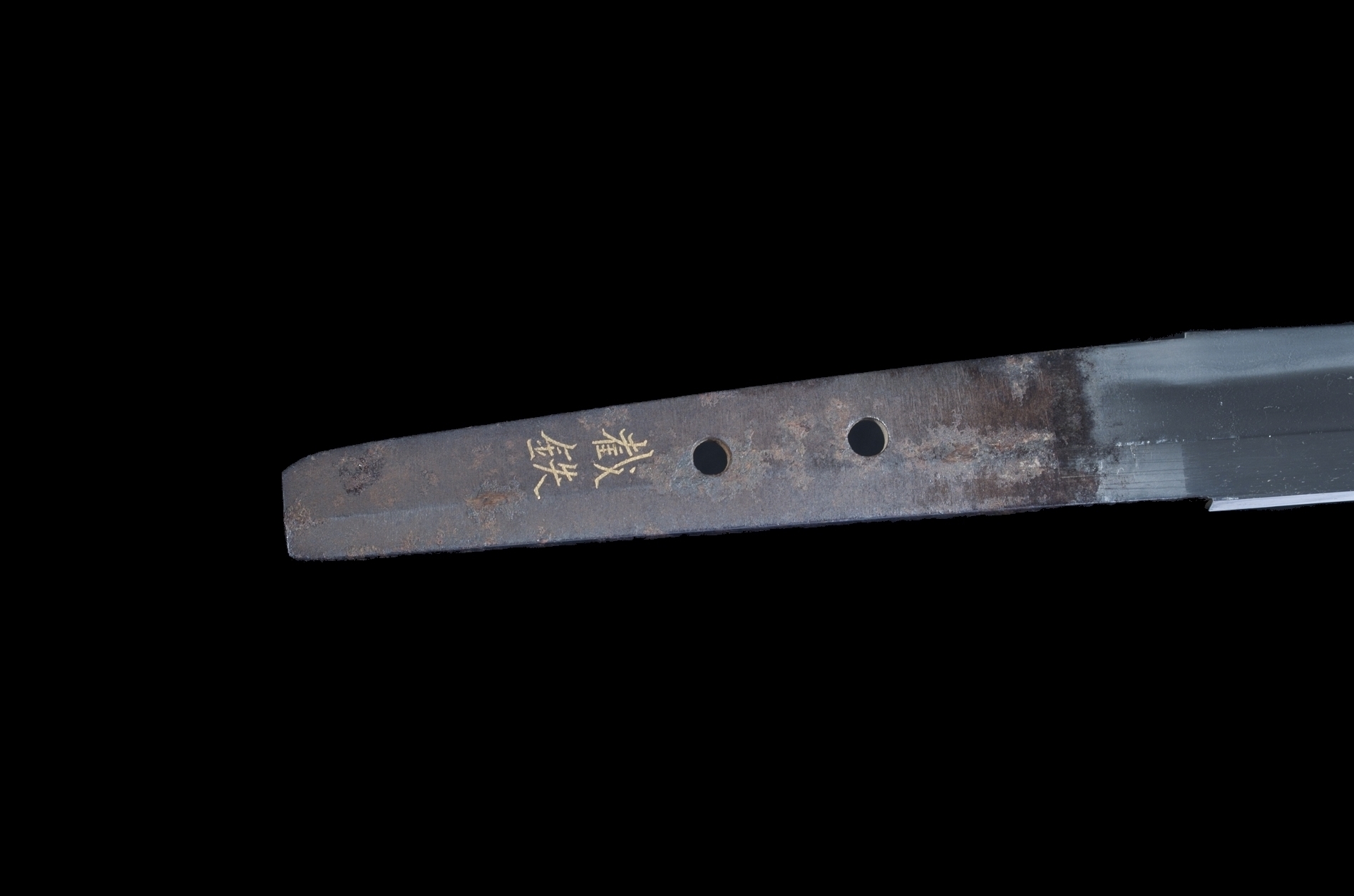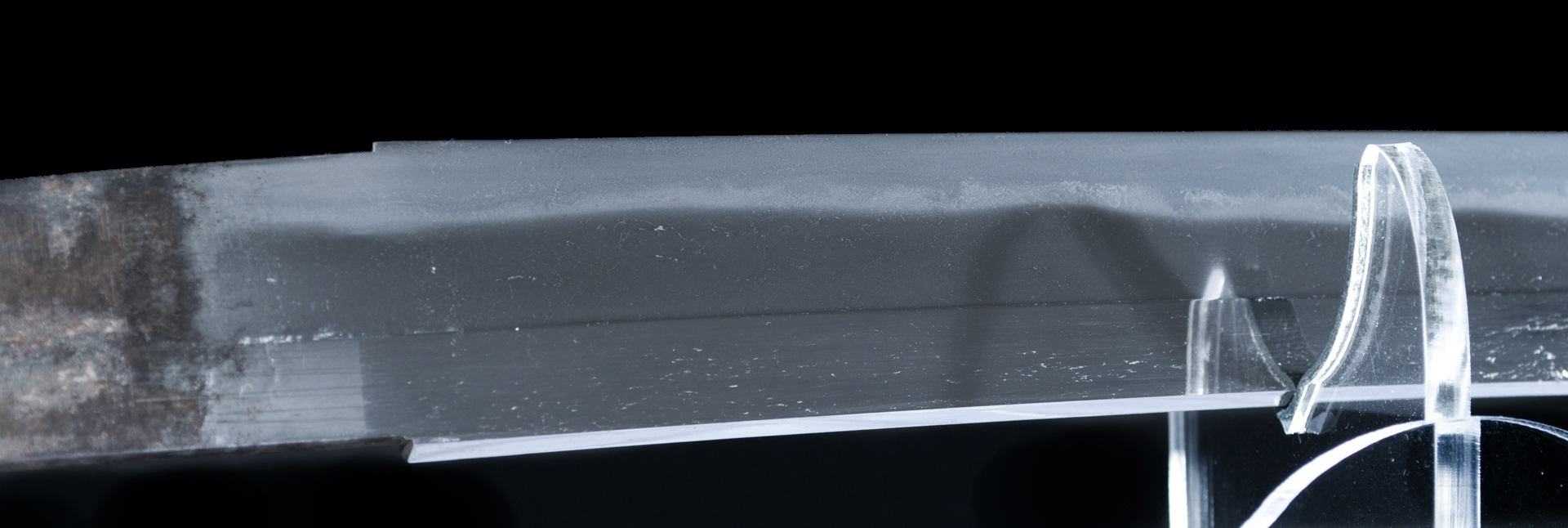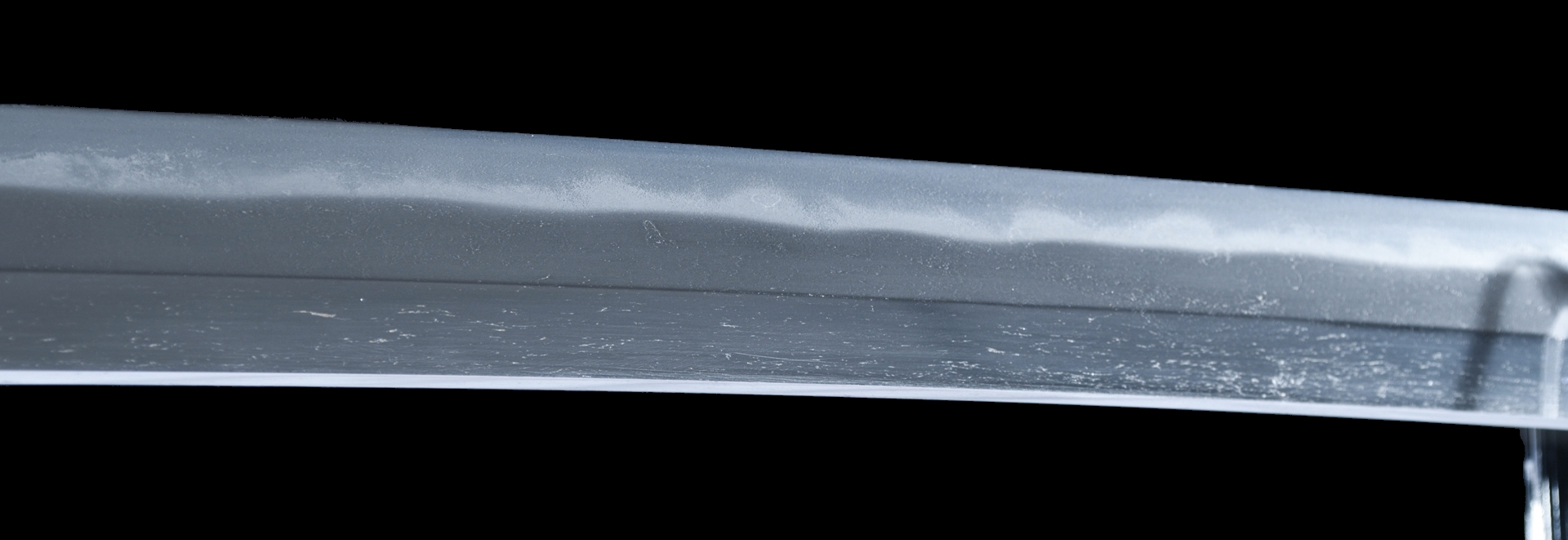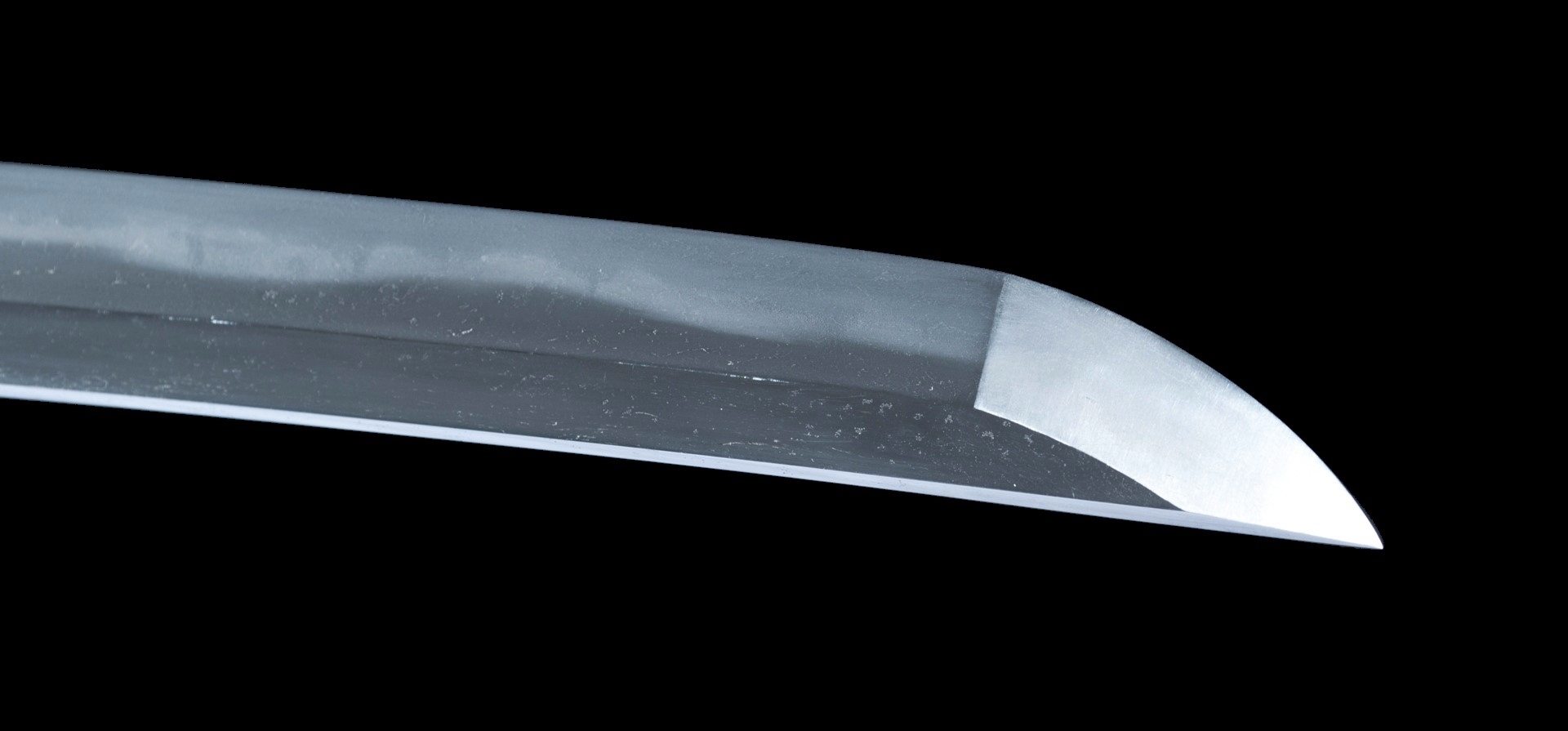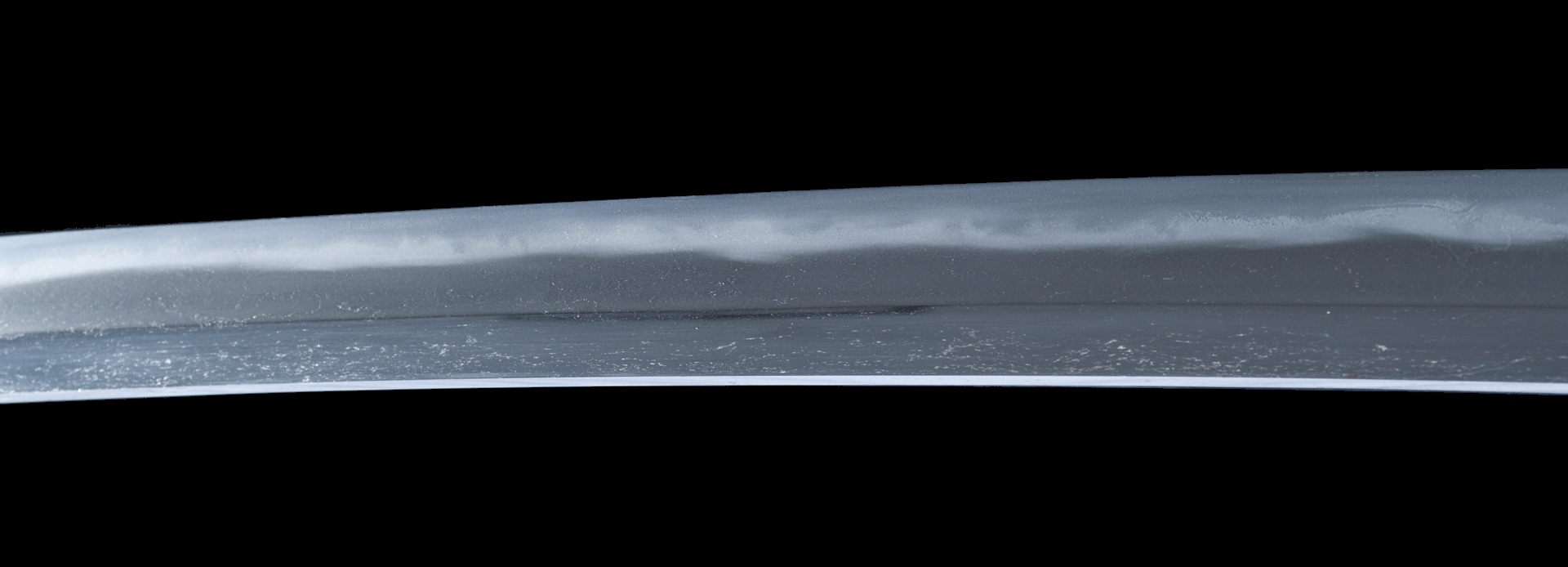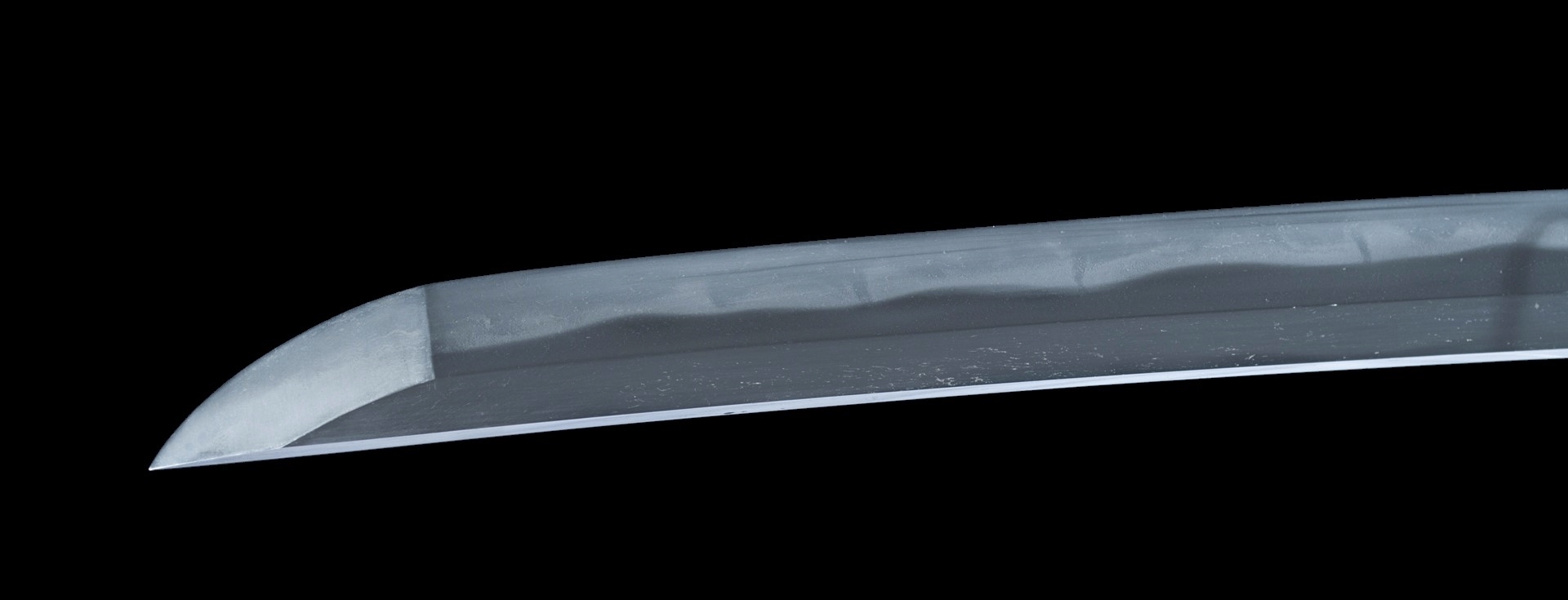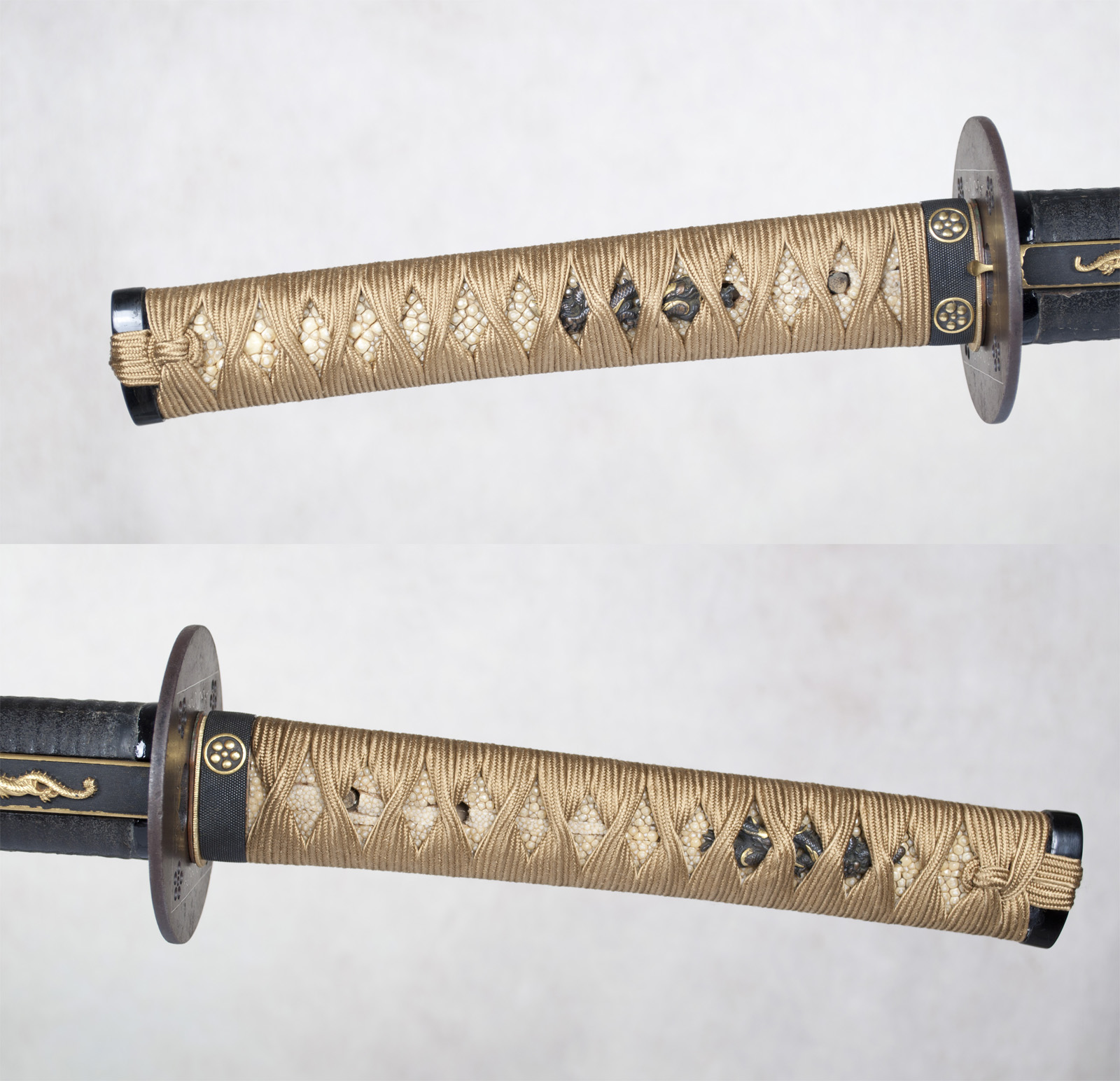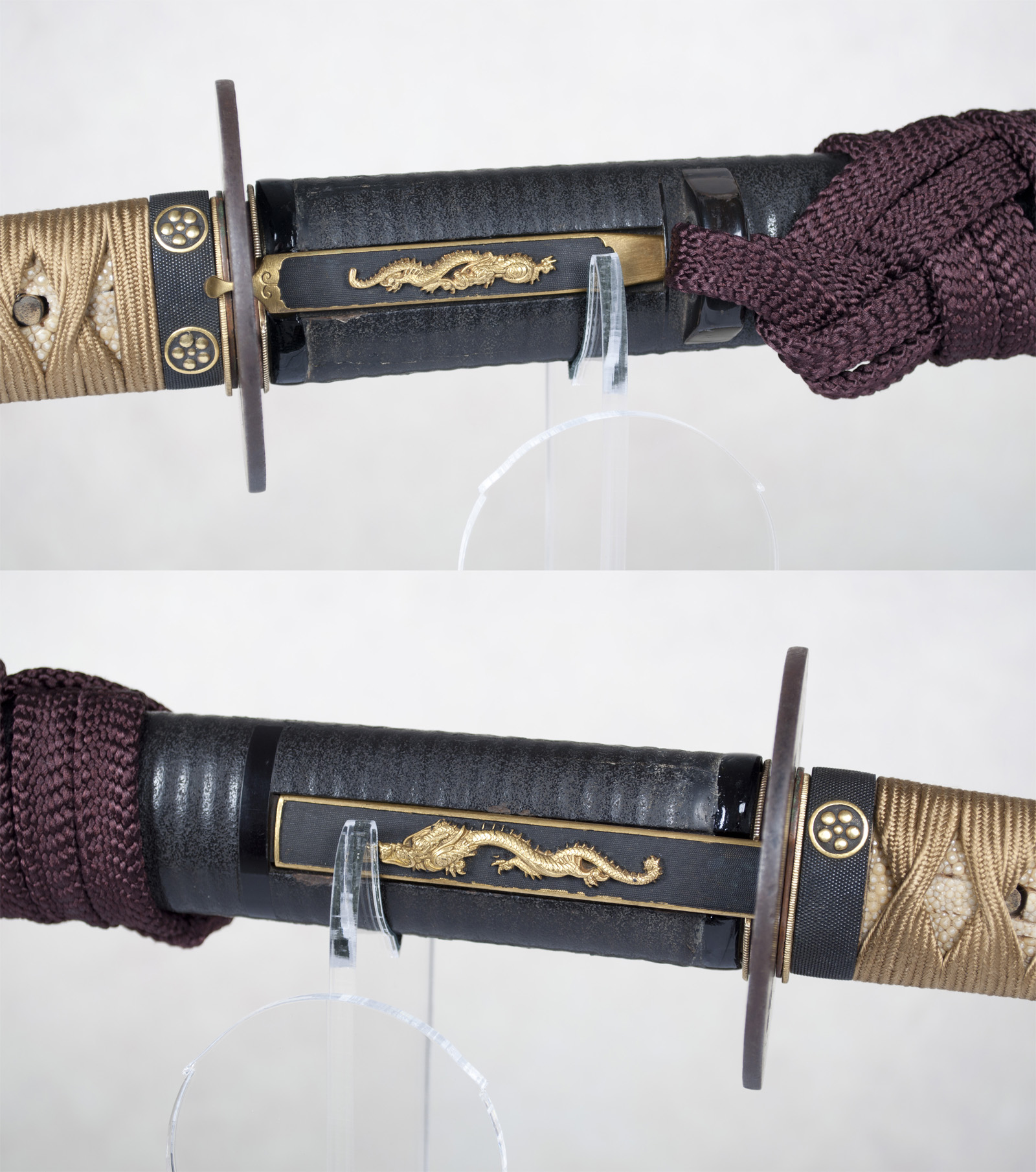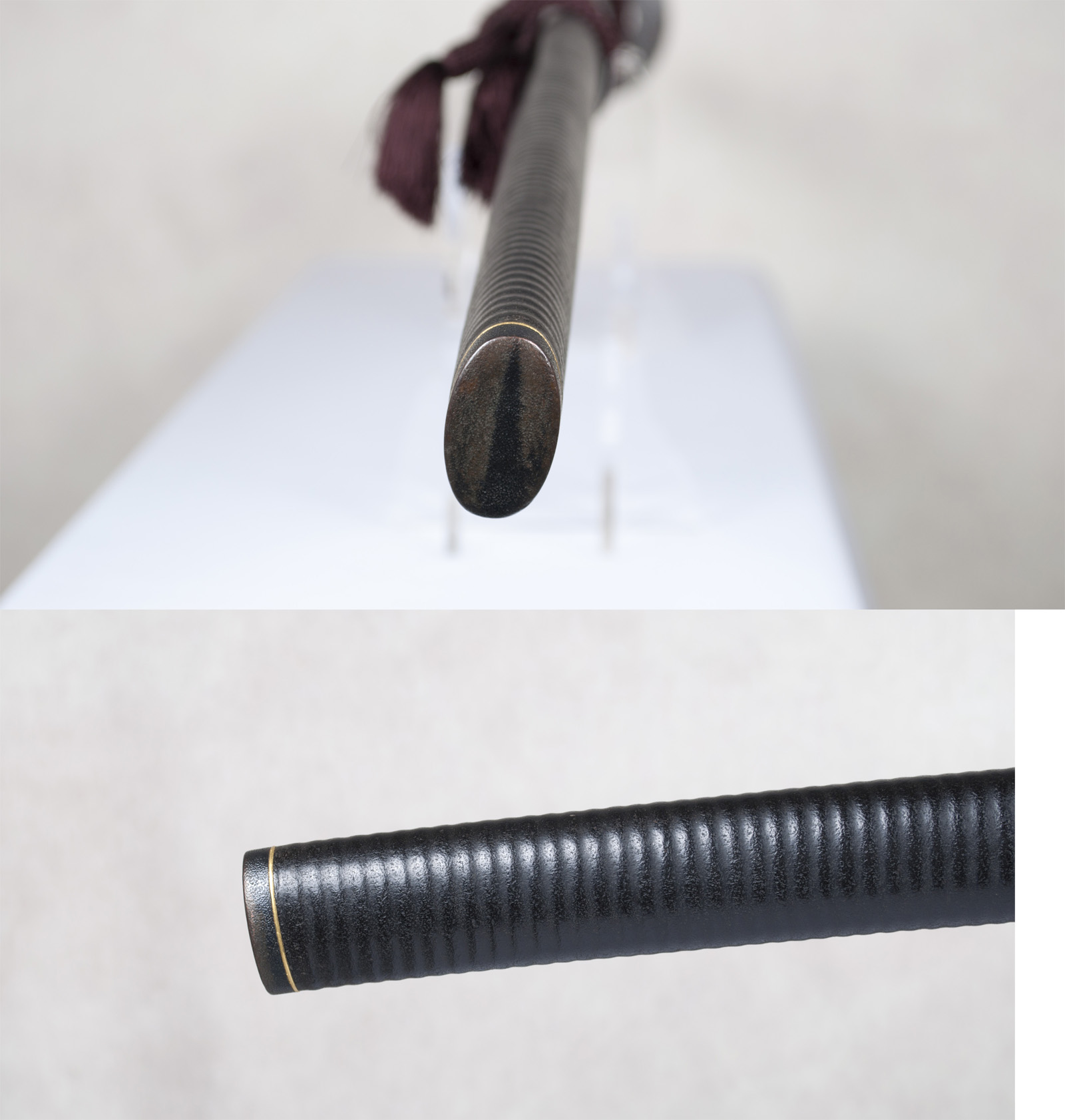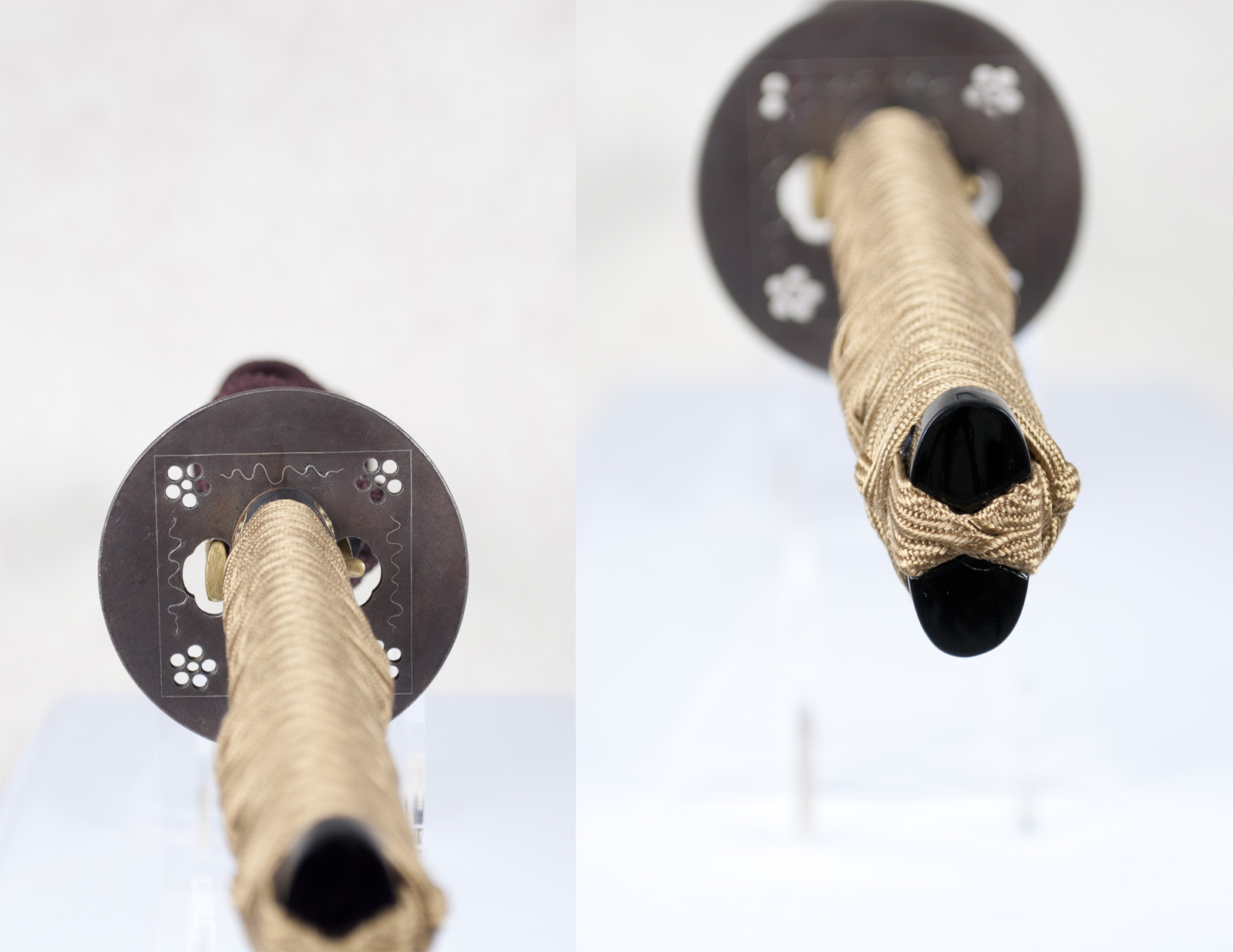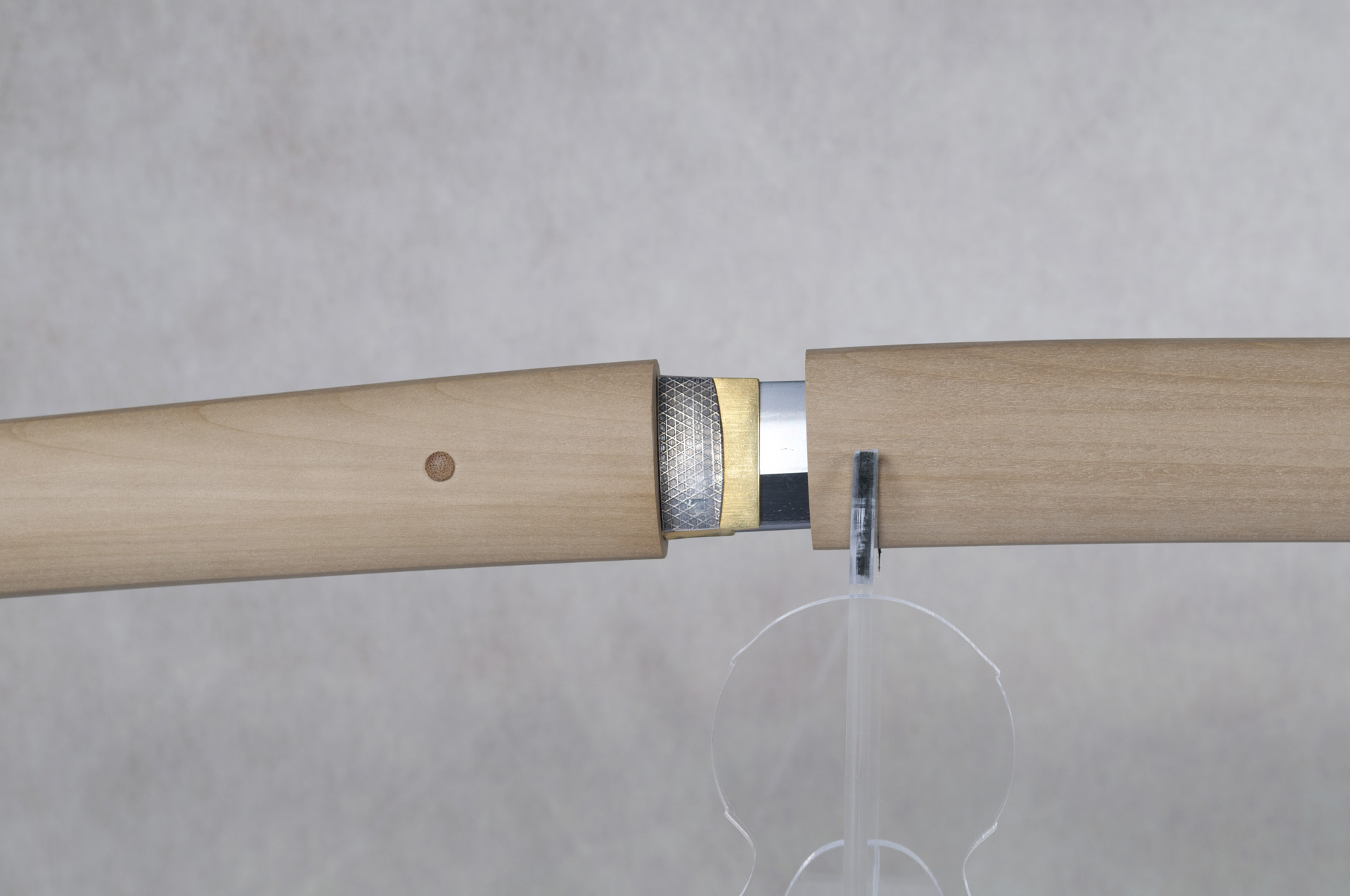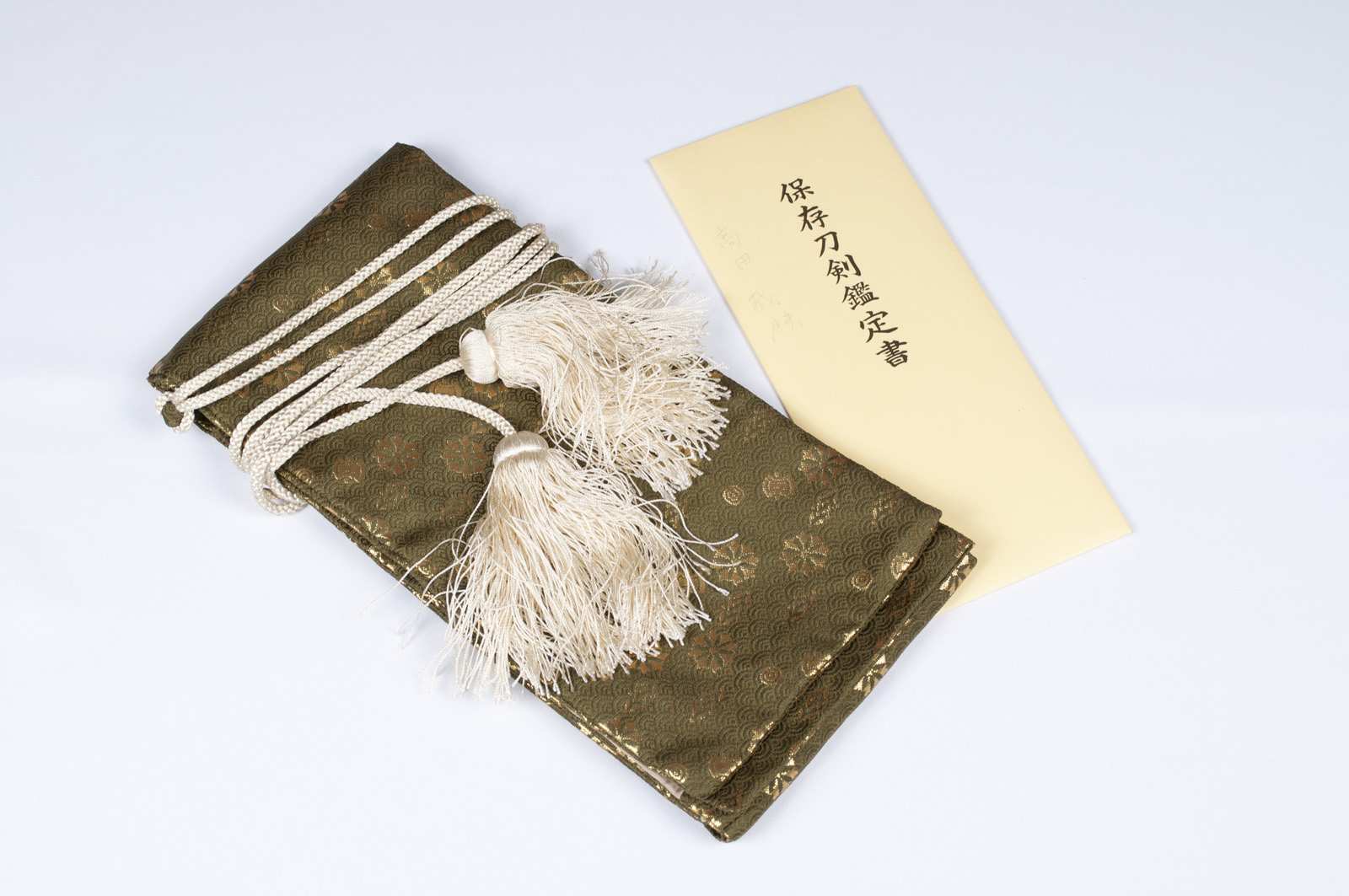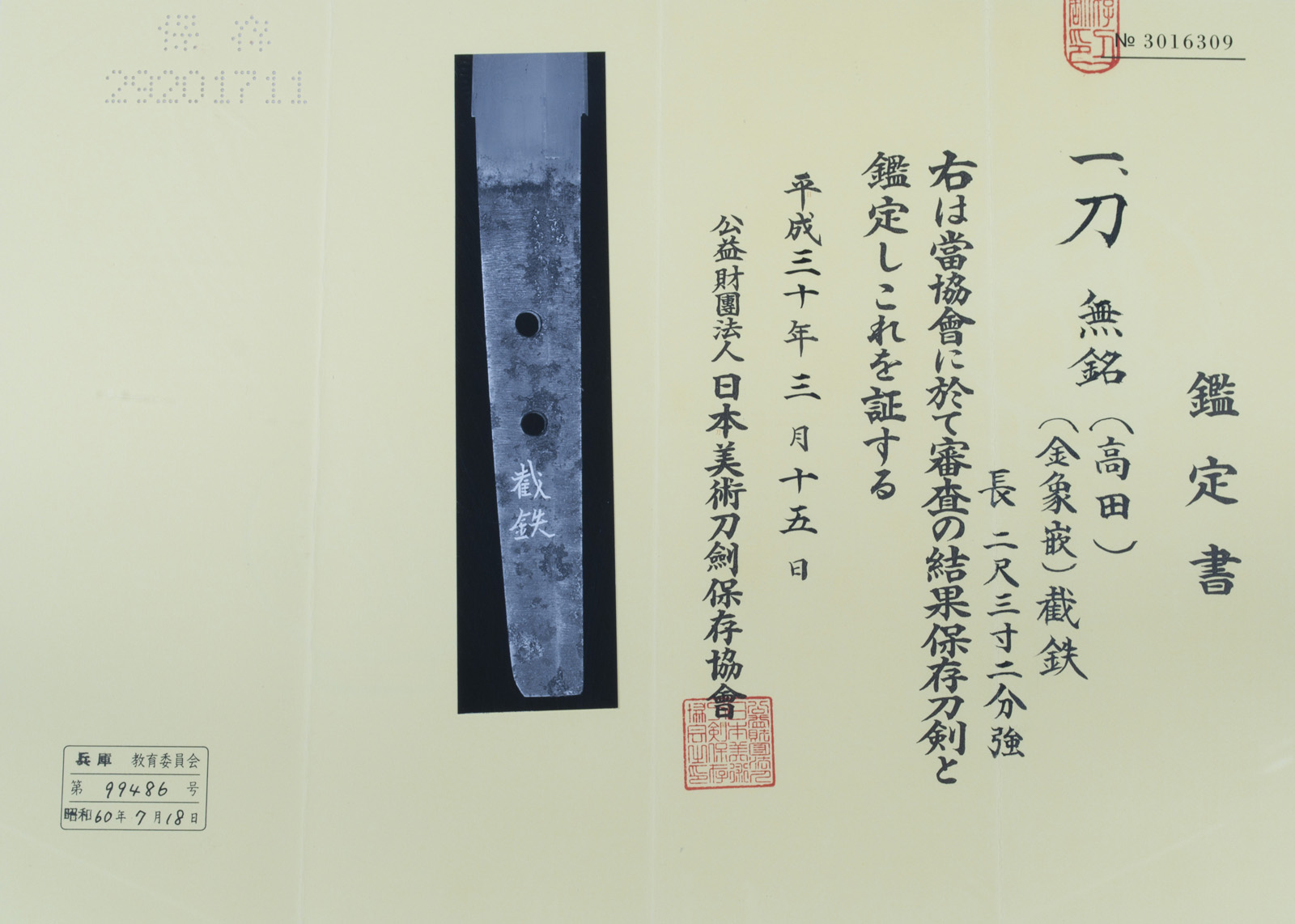Koto Katana attributed to the Takada school with gold-inlay cutting test authenticated by the NBTHK.
The cutting test (Tameshigiri) reads « Kiri-Tetsu », which translates as « cut iron ». This means that this sword has literally cut iron!
This kind of test is extremely rare, not only because of its nature, but also because it was made with an old blade (koto).
Muromachi period (1336 – 1573)
Takada school – Bungo province
NBTHK Hozon certificate
Beautiful o-suriage blade, over 70 cm long, wide and powerful, in perfect condition.
The jigane is made of ko-itame with masame in the shinogi-ji.
The hamon in nie deki forms a gunome midare design featuring a few sunagashi and yô, with a bright white nioi.
A beautiful koshirae accompanies the blade on the theme of the dragon and kamon of the Hisamatsu Mastudaira family. A samurai family descended from the three half-brothers of Tokugawa Ieyasu. With an income of 150,000 koku, the Hisamatsu were among the greatest Fudai Daimyô of the Edo period.
The menuki, kozuka and kogai are of fine quality, dragon-themed and made in gilded shakudo. The tsuba is made of iron with pure silver inlays, decorated with the Hisamatsu kamon, as is the fuchi. The kashira is made of black horn, as required by the formal code of the Edo castle samurai, imposed by Tokugawa Ieyasu.
Dimensions:
Nagasa = 70.1 cm
Motohaba = 3.3 cm
Kasane = 0.65 cm
Sori = 1.6 cm
The Takada school (Sue), which flourished from the Nanbokuchô period until the end of Muromachi, was founded by Tomoyuki in Bungo province.
Tomoyuki was one of the three students of the great Sadamune and was himself considered a top-ranking blacksmith.
This gorgeous sword is a perfect illustration of the quality and efficiency of the blades produced by this prestigious school, in times of war when the reliability of one’s weapon could mean the difference between life and death…
Sold


